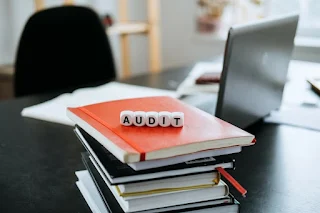What Is Collusion in Auditing?
Collusion is a secret non-competitive arrangement, sometimes illegal, between rivals for fraudulent or deceitful purposes that gives them an unfair advantage. Typically, such arrangements might involve withholding or restricting supply or even driving up prices to disrupt equilibrium in the market.
The outcome of collusion is consumers paying more as a result of the artificially heightened competition. Collusion is difficult to coordinate in a market with many competitors, so it is commonly found in oligopoly markets where there are only a handful of competitors.
Collusion in Auditing
Collusion in auditing occurs when a few auditors have a monopoly in a firm. The auditors are faced with the challenge of colluding and losing business or being honest and leaving their reputation intact.
Competition among auditors increases the probability of collusion however external auditors can be used to enhance credibility and transparency. This is, however, only true to the extent that those external auditors are not tempted to collude.
Collusion is one of the most difficult types of fraud to uncover and auditors have been known to excuse themselves from cases of detecting or uncovering collusion. When committed by an individual it is almost impossible to uncover, and it becomes infinitely more difficult when a group of accountants is working together to defraud a firm.
Types of Collusion in Auditing
Collusion can occur in different forms:
- When two or more employees collaborate to commit fraud and circumvent the distribution of tasks.
- When an employee feeds information to non-employees with the intention of receiving a kickback.
- When two or more organizations collaborate to manipulate supply, demand, or pricing in the market.
It should be noted however, that it is possible for employees to unknowingly assist in collusion depending on the management’s authority or override abilities.
There are also instances where companies explicitly agree to work together which is referred to as explicit collusion. On the other hand, when organizations informally agree to the same guidelines this is referred to as tacit collusion.
Price leadership is a prime example of tacit collusion where a company that has the majority of the market share sets a price and smaller companies adjust their prices to match.
How Common Is Collusion in Auditing?
The Association of Certified Fraud Examiners estimates that there is a 51% chance of collusion in most business organizations in the United States. In 2020, 35% of these cases involved two collaborators with a median loss of $105,000 while 65% of these collusion cases involved three or more perpetrators with a median loss of $350,000.
How To Prevent Collusion
While collusion can be hard to prevent, there are some steps an organization can take to mitigate its occurrence.
Preventing Collusion Between Employees
To prevent collusion between employees, organizations should:
- Not hire employees who are related. In case there are related employees, they must not share any common processes and organizations must carefully consider how and when to give each related party access.
- Ask for disclosure of relationships between employees including members sitting on the board of directors. This information should be updated annually.
- Conduct background checks
- Provide adequate employee training on internal procedures and controls
- Have written policies regarding fraud
- Prohibit vendors and suppliers from offering employees gifts and gratuities
- Provide an avenue for employees to anonymously report inappropriate behavior by colleagues or agents
Preventing Collusion Between Organizations
To prevent collusion between organizations:
- The industries size and number of competitors should be regulated
- The government should also introduce laws and regulations against collusion such as the United States antitrust laws.
- Institution of defection when businesses use information to undercut competitors to boost their profits.
Examples of Collusion
There are many antitrust laws designed to prevent collusion and price fixing. For instance, a company may not share insider information about buying strategies, costs, or distribution with another firm with the intention to change and affect the market equilibrium.
These laws level the playing field and ensure companies do not use their power to influence markets or the level of competition.
However, employees can also collude by working together to steal from an organization. This is common in retail where managers look the other way as employees steal items for sale.
In accounting and bookkeeping, collusion may occur when the person handling cash and the bookkeeper work together to embezzle money from the organization.
A recent example of collusion is the largest school system fraud uncovered in Roslyn, Long Island where an individual used a school district’s credit card for residential items. In this case, over 20 employees colluded to abuse the district’s funds with the help of an external auditor who concealed the fraud.
The whistleblower was a Home Depot employee working outside the geographic areas of the school district. As a result, there was a statewide audit of all school districts in New York State.
How To Detect Collusion?
In the majority of all collusion cases, a whistleblower made the discovery and alerted authorities. However, there are other ways to detect collision such as:
- Anonymous tip lines
- Behavioral red flags
- Internal audits
- Recruitment red flags
- Analyzing unusual patterns and activities in employees
- Forensic auditing
Summary
Auditing collusion is a major problem for many businesses, and it can significantly affect investor confidence.
In recent times, collusion in auditing has also eroded trust in Certified Public Accountants and affected the functioning of capital markets.
However, engaging a forensic auditing expert can help you determine whether the true value of your business is reflected in your financial statements.











